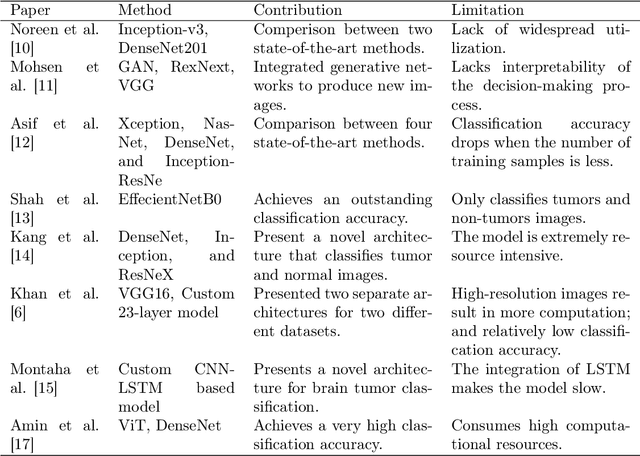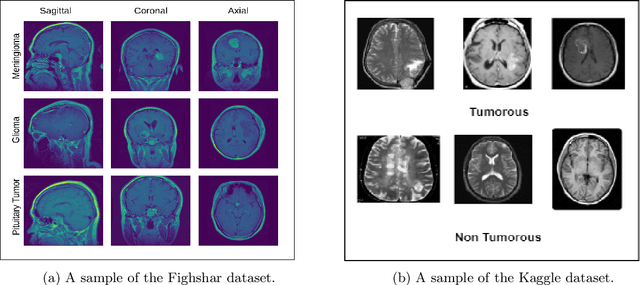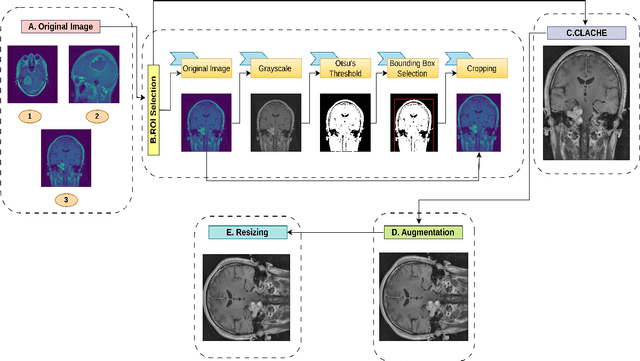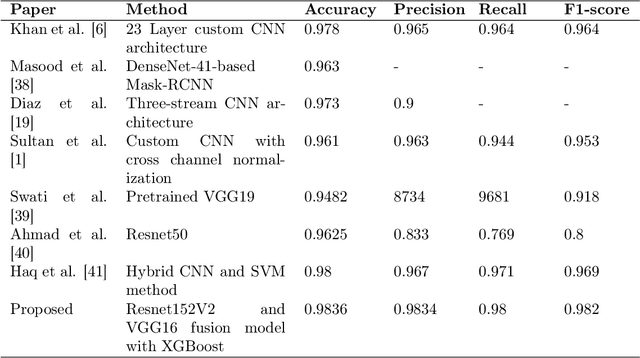Jarin Tasnim Raya
Deep Fusion Model for Brain Tumor Classification Using Fine-Grained Gradient Preservation
Jun 28, 2024



Abstract:Brain tumors are one of the most common diseases that lead to early death if not diagnosed at an early stage. Traditional diagnostic approaches are extremely time-consuming and prone to errors. In this context, computer vision-based approaches have emerged as an effective tool for accurate brain tumor classification. While some of the existing solutions demonstrate noteworthy accuracy, the models become infeasible to deploy in areas where computational resources are limited. This research addresses the need for accurate and fast classification of brain tumors with a priority of deploying the model in technologically underdeveloped regions. The research presents a novel architecture for precise brain tumor classification fusing pretrained ResNet152V2 and modified VGG16 models. The proposed architecture undergoes a diligent fine-tuning process that ensures fine gradients are preserved in deep neural networks, which are essential for effective brain tumor classification. The proposed solution incorporates various image processing techniques to improve image quality and achieves an astounding accuracy of 98.36% and 98.04% in Figshare and Kaggle datasets respectively. This architecture stands out for having a streamlined profile, with only 2.8 million trainable parameters. We have leveraged 8-bit quantization to produce a model of size 73.881 MB, significantly reducing it from the previous size of 289.45 MB, ensuring smooth deployment in edge devices even in resource-constrained areas. Additionally, the use of Grad-CAM improves the interpretability of the model, offering insightful information regarding its decision-making process. Owing to its high discriminative ability, this model can be a reliable option for accurate brain tumor classification.
Distinguishing Human Generated Text From ChatGPT Generated Text Using Machine Learning
May 26, 2023Abstract:ChatGPT is a conversational artificial intelligence that is a member of the generative pre-trained transformer of the large language model family. This text generative model was fine-tuned by both supervised learning and reinforcement learning so that it can produce text documents that seem to be written by natural intelligence. Although there are numerous advantages of this generative model, it comes with some reasonable concerns as well. This paper presents a machine learning-based solution that can identify the ChatGPT delivered text from the human written text along with the comparative analysis of a total of 11 machine learning and deep learning algorithms in the classification process. We have tested the proposed model on a Kaggle dataset consisting of 10,000 texts out of which 5,204 texts were written by humans and collected from news and social media. On the corpus generated by GPT-3.5, the proposed algorithm presents an accuracy of 77%.
 Add to Chrome
Add to Chrome Add to Firefox
Add to Firefox Add to Edge
Add to Edge